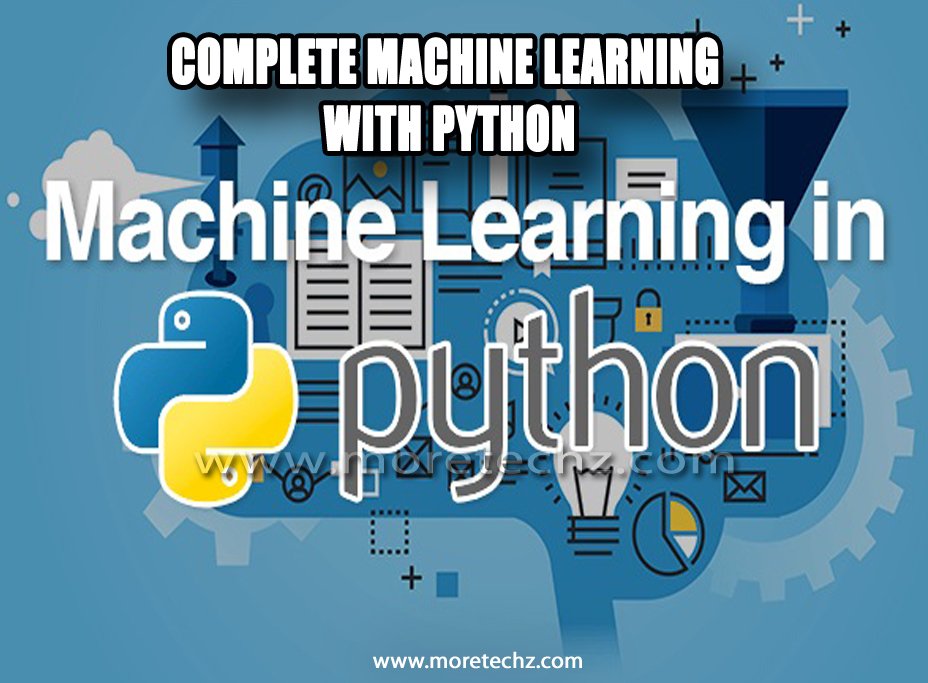Complete Machine Learning with Python
Introduction
In the present information-driven world, AI has arisen as a groundbreaking innovation with huge applications across enterprises. Because of its straightforwardness and broad libraries, Python has turned into a famous programming language for carrying out AI calculations. Whether you’re a novice hoping to jump into the universe of information science or a carefully prepared professional hoping to work on your abilities, dominating AI with Python is fundamental. In this far reaching guide, we’ll investigate all that you want to be aware of to learn AI with Python.
Understanding AI:
AI is a subset of man-made brainpower that permits frameworks to gain from information and settle on expectations or choices without being expressly customized. It includes building models that can perceive examples and settle on shrewd choices given information. There are three primary kinds of AI calculations: managed learning, solo learning, and support learning.
Managed learning includes preparing a model on a marked dataset where each information is related to a comparing yield. Normal managed learning calculations incorporate straight relapse, strategic relapse, choice trees, arbitrary timberlands, support vector machines, and brain organizations.
Solo learning, then again, manages unlabeled information and expects to track down secret examples or designs in the information. Grouping calculations, for example, K-implies bunching and various leveled grouping are famous solo learning methods.
Support learning is a sort of AI where a specialist figures out how to settle on choices by cooperating with the climate and getting criticism as remunerations or authorizations. It is usually utilized in regions like mechanical technology and gaming.
Beginning with Python for AI:
Straightforwardness, adaptability, and broad libraries settle on Python as an optimal decision for carrying out AI calculations. Before plunging into AI, it is fundamental to have a decent comprehension of the essentials of Python programming. Luckily, there are a lot of assets accessible web-based, including instructional exercises, courses, and documentation to assist you with getting everything rolling with Python.
When you know the rudiments of Python, the subsequent stage is to dive more deeply into famous AI libraries like NumPy, pandas, sci-kit-learn, TensorFlow, and PyTorch. These libraries give instruments and usefulness to information control, perception, and AI model structure.
Information investigation:
Information investigation is a basic move toward any AI project. Before building models, it is fundamental to grasp the hidden information and recognize any examples or patterns. The panda’s Python library gives strong information control and examination instruments, permitting you to effectively load, clean, and preprocess datasets.
Representation is one more crucial part of information investigation. Python offers libraries, for example, Matplotlib and Seaborn for making different kinds of diagrams and charts to imagine information dispersion, connections, and patterns.
Capability:
Utilitarian design assumes an imperative part in building successful AI models. It includes choice, change, and production of new highlights from crude information to work on model execution. Python gives libraries like scikit-figure out how to include determination, scaling, and change.
Building AI models:
With Python’s sci-kit-learn library, building AI models is basic and natural. Whether you’re dealing with grouping, relapse, or bunching undertakings, sci-kit-learn offers a wide assortment of calculations and devices for model structure, assessment, and tuning.
For profound learning undertakings, TensorFlow and PyTorch are well-known decisions. These libraries give an undeniable level of Programming interface to effectively constructing brain organizations and profound learning models.
Model assessment and approval:
Whenever you’ve constructed an AI model, it’s fundamental to assess its presentation and check its viability. Python gives instruments like cross-approval, hyperparameter tuning, and model assessment measurements to evaluate the exhibition of your models precisely.
Organization and creation:
Conveying AI models to creation is a basic move toward the improvement lifecycle. Python offers structures like Jar and Django for building web applications and APIs that serve AI models under underway conditions. Likewise, cloud stages like AWS, Purplish Blue, and Find out about Cloud offer types of assistance for conveying and overseeing AI models at scale.
Constant learning and improvement:
AI is an advancing field with new calculations and methods being grown consistently. To remain in front of the business, it is fundamental to learn and investigate novel thoughts and advances continually. Python’s dynamic local area and broad environment make it simple to keep up-to-date with the most recent advances in AI.
Conclusion:
Dominating AI with Python opens up a universe of chances in information science, and man-made brainpower, and that’s just the beginning. Whether you’re a fledgling or a carefully prepared specialist, Python gives the instruments and assets you want to fabricate strong AI models and concentrate significant experiences from information. By following this far-reaching guide and exploiting Python’s rich environment, you can leave on an intriguing excursion into the captivating universe of AI. With devotion and practice, you can become capable in AI and add to taking care of genuine issues utilizing Python and AI calculations. Begin your excursion today and open the vast conceivable outcomes of AI with Python.
